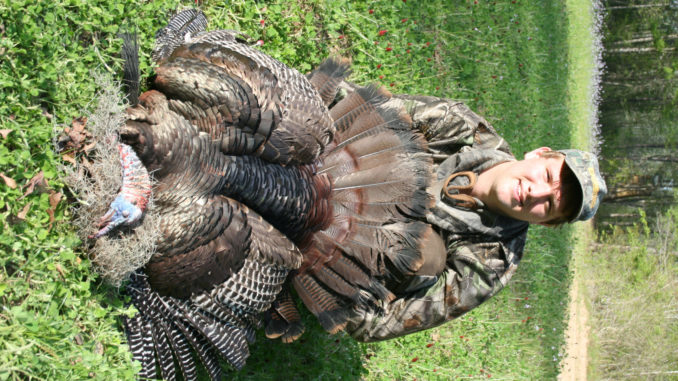
Spring turkey harvest up 1 percent; improved 2010 reproduction key to increase, SCDNR says
Turkey hunters enjoyed a slightly better spring season in 2011 compared to 2010, with a harvest increase of 1 percent, according to South Carolina Department of Natural Resources statistics.
“During the 2011 spring season, our surveys estimated a total of 14,183 adult gobblers and 2,902 jakes were harvested for a statewide total of 17,085 turkeys,” said Charles Ruth, SCDNR’s turkey project leader. “This figure represents a 1 percent increase in harvest from 2010, when a total of 16,924 turkeys were harvested.”
Ruth said, that while the increase is step in the right direction, the overall harvest is still well below the record.
“Although the harvest was up slightly, (it) still represents a 33-percent decrease from the record harvest in 2002, when 25,487 turkeys were estimated taken,” Ruth said. “The reduction in harvest seen since 2002 is likely attributable to one primary factor: poor reproduction.”
Ruth said reproduction has been poor during seven of the past nine years, followed by corresponding drops in spring harvests.
“On the other hand, reproduction in 2010 was up substantially compared to previous years, resulting in more birds available for harvest in 2011,” he explained. “As expected, the increase in harvest in 2011 was related to the harvest of juvenile birds — jakes — rather than mature gobblers.
“In fact, the harvest of jakes as a percent of the total harvest in 2011 was 17 percent, the highest since 2005 when (it) was 24 percent.”
He said 2005’s substantial increase also followed a year of great recruitment.
“The 2005 season followed outstanding reproduction that occurred in the summer of 2004,” Ruth said. “This association between subtle changes in reproduction and its effects on harvest are rather remarkable in South Carolina’s turkey harvest and reproductive data set.”
Ruth said wild turkeys are very susceptible to significant fluctuations in reproduction and recruitment.
“Lack of recruitment success is typically associated with bad weather, particularly cold and wet weather during nesting and brood rearing season,” he said. “Also, turkey habitats are continually changing in South Carolina. Although timber management activities stimulated the growth in South Carolina’s turkey population in the 1980s, considerable acreage is currently in even-aged pine stands that are greater than 10 years old, a situation that does not support turkeys as well.”
Ruth said the statewide harvest rate of 0.8 gobblers per square mile this past spring remains good and comparable to other Southeastern states.
In terms of the number of gobblers taken per square mile, the top five counties last spring were: Union and Pickens with 1.4 each, and Fairfield, Cherokee and Newberry with 0.7 each.
“Harvest per unit area standardizes the harvest among counties regardless of the size of individual counties,” he said. “One measure of harvest rate is the number of turkeys taken per square mile.”




Be the first to comment